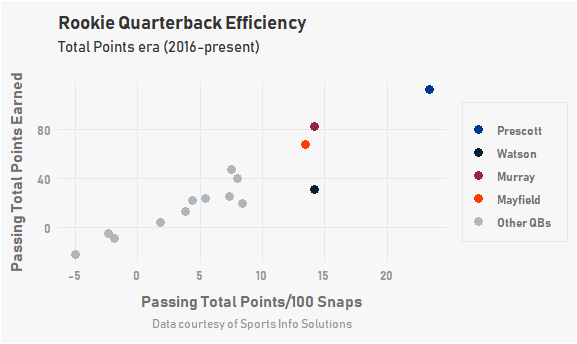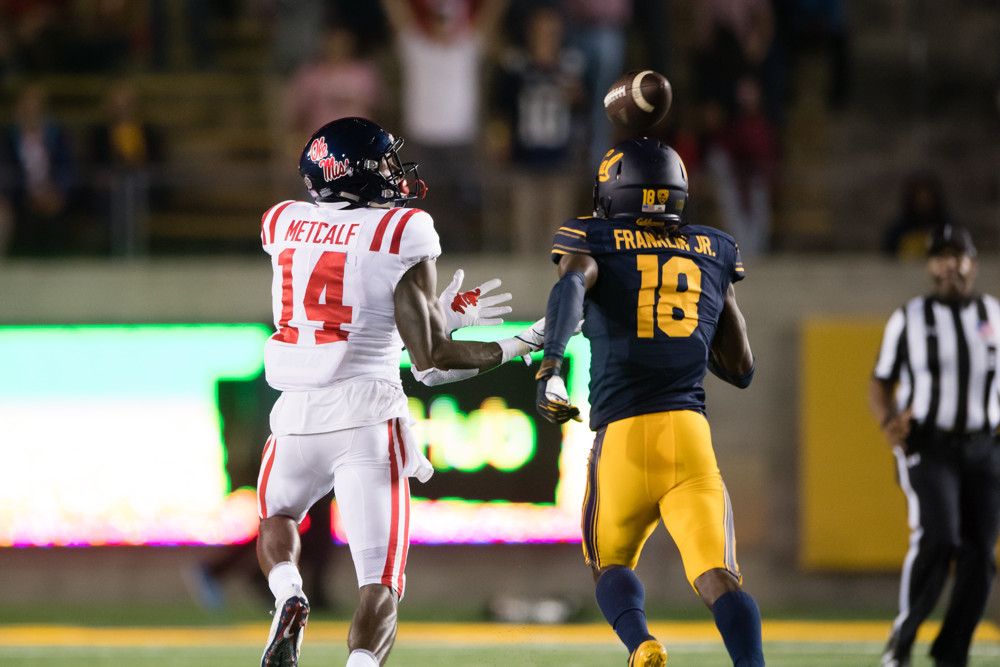While each quarterback in this year’s draft class has their flaws, Anthony Richardson is the one who has unanimously been labeled a project. And, at first glance, that may be fair. Richardson was a first-year starter with a 54% completion rate on a 6-7 team, and he didn’t really start to generate serious buzz until he lit up the drills at the combine.
We’ve seen athletic quarterbacks decline to compete in the underwear olympics (the combine) before–Lamar Jackson comes to mind–but perhaps that wasn’t a luxury that Richardson could afford. At any rate, it turned out to be a good business decision, as the Florida signal-caller is now being talked about as a Top 10, or even a Top 5 selection.
But Richardson is more than just a physically-gifted fixer-upper. He’s consistently shown some high-level quarterback play on film and is more refined than most people think. He generally does a good job of getting through his progressions and throwing with anticipation, and his pocket movement is already very good, especially for a 21-year-old. The results haven’t been there, though, and that’s largely due to issues with accuracy.
Completion percentage can be misleading, but there’s no getting around the fact that anything in the 50s is worrisome. On-target rate is a better representation of accuracy because it actually seeks to measure the precision of the throw–rather than just the result–but can likewise be muddied by factors such as throw depth.
Indeed, Richardson attempted higher difficulty throws than most quarterbacks, as his average depth of target (10.7) ranked 10th in the country. Furthermore, his receivers’ ball skills left much to be desired with the Gators ranking 52nd and 58th among Power 5 schools in on-target catch rate and drop rate, respectively. Still, it’s a bad sign that he ranked 95th in catchable rate (79.8%) and 106th in on-target rate (65.4%) among 114 FBS quarterbacks who attempted at least 200 passes last year.
If there were a holy grail of accuracy metrics (there isn’t), that would be On-Target +/- , which sets a baseline on-target rate for each throw based on factors like throw depth and field location, and then compares the actual result to that expectation. Unfortunately, Richardson also fared poorly in this metric, ranking 104th among the aforementioned group at -4%. Even Kentucky’s Will Levis, another subject of accuracy concerns, ranked 35th at +3%.
What’s interesting, though, is that if you break this metric down to the route level, Richardson isn’t generally inaccurate. That is, he’s not consistently performing below expectation on most routes.
He’s good at throwing a few routes, slightly above average at most routes, and then abysmally bad at a handful of routes. He struggled a lot with in- and out-breakers, with an on-target rate 20% below expectation, and those routes made up about 10% of his attempts. Bubbles and arrow routes proved to be even more difficult at a clip of -25%, and also made up approximately 10% of his throws.
Lastly, his OnTgt+/- on scramble drills was -23%, which comprised about 5% of his throws. That component might be especially concerning considering his playmaking ability is a big selling point for him.
I’m not sure that there’s a smoking gun here that would allow us to wave off these accuracy concerns. These route clusters are different enough from each other that it’s difficult to identify a recurring cause of the symptom. Even then, his On-Target +/- would only be +2% if we stripped all those routes out of the sample, and it’s important to remember that these benchmarks are relative to college play and not the NFL level, where windows get tighter.
It would also be disingenuous to assert that a team could scheme to avoid him throwing all of these routes. Whichever franchise takes him will simply have to bank on improvement and live with it in the meantime. Quarterbacks with similar draft profiles like Josh Allen and Justin Herbert have been huge successes, so taking a risk here is tantalizing considering both these recent anecdotes and the fact that there’s no consensus franchise prospect this year like an Andrew Luck or a Trevor Lawrence.
Even for people like myself who are fans of his game, the accuracy issues have to be reconciled in some way, and the statistics outlined herein cannot do that. It’s my belief that he has fewer obstacles to overcome to become a good NFL starter than most people believe, but the obstacle he does have is a pretty big one. Accuracy is arguably the most important trait for pro quarterbacks, so whoever takes this on will have to fix one big problem rather than several small ones. And whoever does will be making a dart throw.


